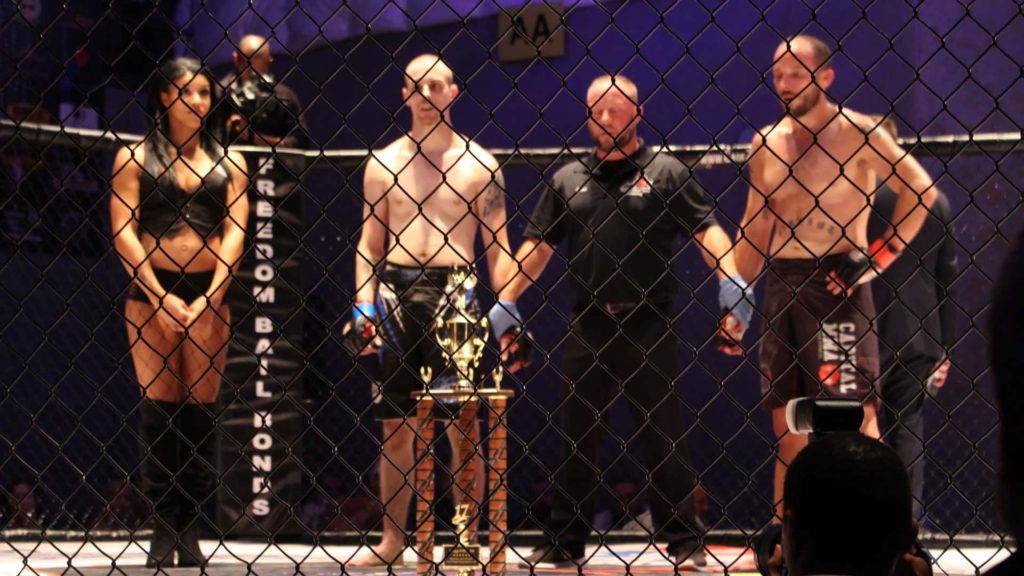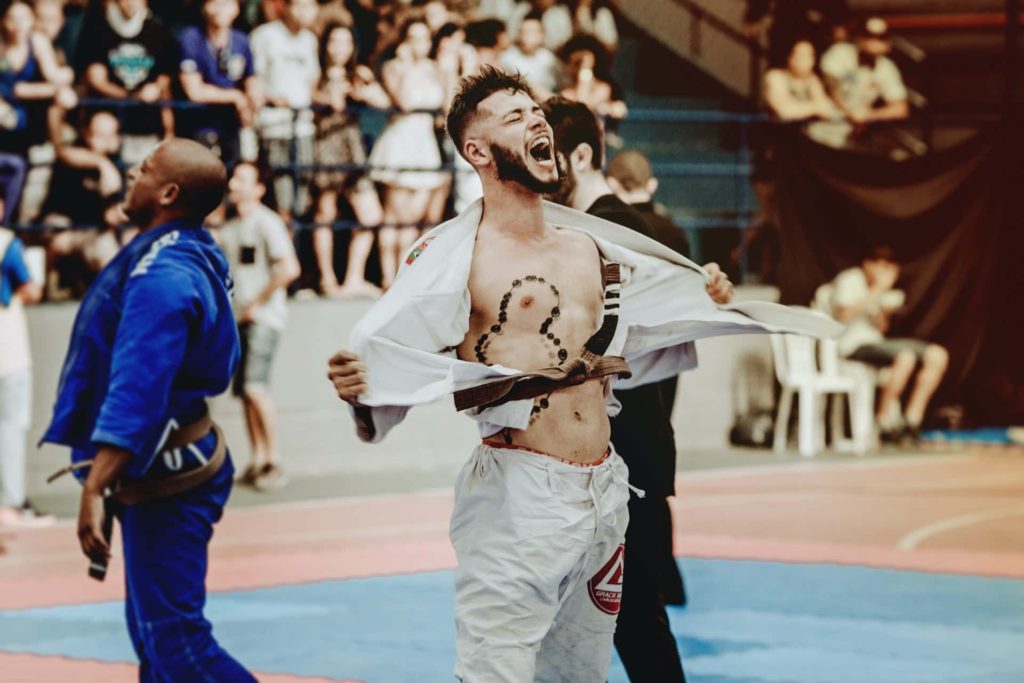Some gyms love to spar regularly. Other gyms don’t like to spar at all or do so very infrequently. Whichever philosophy you subscribe to, it is important to know how sparring compares to competitive fighting regarding its effects on the body. This way, training can be planned to accommodate the physiological responses imposed from sparring.
Sparring in MMA shows similar anaerobic lactic demands to competitive fighting. However, the anticipatory responses are much greater before competition with elevated cortisol (stress hormone) and increased glucose availability. BJJ and kickboxing show the same response with elevated cortisol before and after competitive fighting much higher than sparring.
With teams and gyms on both sides of the sparring camp, you must wonder, what do coaches see as positives and negatives for sparring?
What Is The Purpose Of Sparring?
Sparring is used to simulate competition. It can be thought of as live drilling. When you practice technical drills, you don’t have the feedback from your opponent. The feedback from your opponent will dictate what techniques or movements you will proceed with.
Without simulating this, it is difficult to develop outside of competitive fighting. Hence, some form of sparring whether it be light or heavy should occur during a training phase in order to develop the pattern recognition and appropriate responses.
Sparring can also be used as a way of developing specific “fight fitness.” Performing rounds against an opponent will help prepare the athlete for the mixed demands of the sport.
What Are The Negatives To Sparring?
Sparring is often cast in a negative light. But it’s important to prescribe the intensity to sparring before making assumptions especially when it comes to striking arts or MMA.
The problems arise when sparring is performed at maximal intensity in striking arts and MMA. In the grappling arts, this isn’t much of a problem unless it’s performed too regularly that the athlete can’t recover for the next session.

How to Dominate Every Fight with Raw, Explosive Power No One Can Match
Discover the underground blueprint that has quietly turned MMA hopefuls into legends, using nothing but sheer, brute force and bulletproof conditioning techniques.
When sparring at maximal intensity in MMA or striking, you risk taking unnecessary damage before a fight. Whether that be brain or body-related. Further, your brain can only take so much of a beating. This is what I perceive as the greatest negative for sparring.
To combat this, sparring can be performed in a low-intensity manner so you’re still able to perceive and react to your opponent’s movements and cues.
When grappling, low-intensity sparring can be implemented through the use of positional sparring. When the opponent escapes the position, the fight restarts meaning more breaks and less overall movement.
What Is The Difference Between Sparring And Competitive Fighting In MMA?

While MMA sparring and competitive fighting may seem like distant cousins, they are quite similar regarding physiological responses. A 2015 study found that blood lactate concentrations post-fight were similar between sparring and competitive fighting [1].
This indicates that sparring and competitive fighting have similar metabolic demands regarding intensity and fatigue. However, the largest difference was pre-fight where before a competitive fight, greater energy is made available through the increase in the stress hormone cortisol. These anticipatory responses are always greater in a competitive environment.
Creatine kinase (a stress marker indicating muscle damage) showed minimal changes after both simulated and competitive fighting. This was likely due to the testing time as it takes 24-48 hours for creatine kinase (CK) to peak. This was observed in a 2016 study where CK peaked at 24 hours after a fight and didn’t return to baseline until 96 hours after the fight [2].
It’s important to note that the level of CK was heavily influenced by the strikes thrown that missed the opponent and strikes absorbed from the opponent. With some protective gear and not throwing strikes at 100% during sparring, elevating high levels of CK after sparring can be minimized.
This is important as if sparring is performed on a Saturday and is performed at a high intensity with hard striking, training will have to reflect this on a Monday meaning training will be very low-intensity.
What Is The Difference Between Sparring And Competitive Fighting In BJJ?

As BJJ is a grappling only martial art, excessive muscle damage isn’t likely to be a factor. After one or two simulated matches, it isn’t. However, after three and four simulated matches, CK increases rapidly [4].
Regarding the stress response, competitive matches show higher concentrations of cortisol both before and after the match compared to simulated matches [5]. Similar to MMA, there is an anticipatory effect as cortisol helps regulate energy availability making it a positive response to competition.
Unfortunately, we do not know how the physiological response changes over a whole competitive day with multiple matches. One can assume that they would be similar or greater to simulated matches due to the acute stress response.
Sparring Vs. Fighting
It is often said that no training will ever replicate what happens in the octagon or ring. However, training can be made to be as close to the real things as possible without bashing each other’s heads in.
One strategy to increase the internal stress before a simulated match or sparring is to simulate competition with athletes from other clubs. This may be easier to organize in grappling sports where overzealous individuals aren’t likely to cause any damage to each other.
A strategy that is better suited for MMA or striking arts can be to only have 2 athletes fighting at a time. Everyone else observes the sparring to increase the stress and pressure on those fighting [3].
Increasing the stress response to replicate competition should not be done often as it will be hard to recover from and it will impact future training sessions. Further, replicating competition stress isn’t needed in order to get the physiological benefit out of sparring.
From a purely physiological standpoint (disregarding the technical aspect), using sparring closer to competition can be a way to develop specific anaerobic lactic capacity (“What is Conditioning Training” explains this in detail) due to the high levels of blood lactate attained. However, heavy sparring too close to a fight will lead to undue fatigue.

